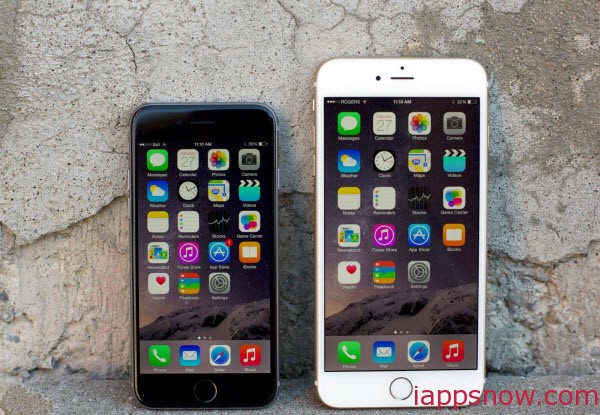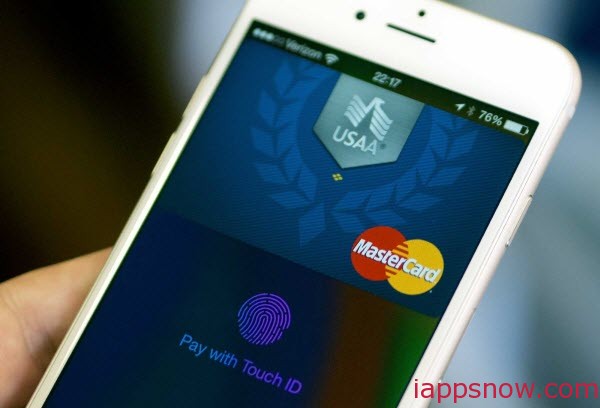Today, we look back at some of the most important Apple stories from 2014, with links to our coverage and to some of the best pieces from around the web.

As you can see, 2014 was an important year for Apple. No new products — and product categories — in the first half allowed many in the sensationalist, opportunistic media once again to proclaim Apple doomed, Tim Cook a failure, and a haunted empire all that remained for the future. Then, in quick succession, WWDC 2014 happened, then the iPhones 6 and Apple Watch event, and then the iPad and Mac event, and Apple’s stock price hit new records.
All told, we saw many amazing highs punctured by a few baffling lows, and we end 2014 as one of the most exciting, transformative years for Apple in recent memory. What are considered to be the most significant Apple stories of 2014? Let we see.
Tim Cook

AAPL’s stock is at an all-time high. Big and bigger iPhones are selling like gangbusters. iOS and OS X have better integration and functionality than ever. Apple Pay is dragging America out of the dark ages of transactions. And the Apple Watch is coming. In other words, not only did Apple’s CEO, Tim Cook, silence the doomsayers, he made them look supremely foolish. At the same time, Cook led the company to champion the environment, privacy and security, diversity, and equal opportunity, while telling those of lesser vision where they could stick their “bloody ROI”.
Like his heroes, Kennedy and King, Cook added a brick to the sunlit path, and encouraged all of us to take another step forward.
- Tim Cook speaks up
- Thoughts on Privacy
- Tim Cook, Class of 1982
- Tim Cook is Apple’s moral center and ‘we believe’ its post-PC battle-cry
- Tim Cook Interview: The iPhone 6, the Apple Watch, and Remaking a Company’s Culture
The Apple Watch

The Apple Watch is the next step in Apple’s relentless drive to make computing ever more personal. It won’t launch until the spring of 2015, but the company previewed the upcoming device in September. With remote control, logging, authentication, notification, and communication features, it could bring computing convenience and the interconnected life to a whole new level. Likewise, the WatchKit API offers developers the ability to project notifications, widgets, and app interfaces from the iPhone to the Watch, further increasing its potential.
Whether the Apple Watch is a success — and how big a success — is a story for 2015. For now, the Watch shows that Apple’s quest to mainstream technology continues unabated.
- Convenience — Apple Watch’s killer feature
- A Rare Look at Design Genius Jony Ive: The Man Behind the Apple Watch
- What you need to know about WatchKit
- As I learn WatchKit
- A Watch Guy’s Thoughts On The Apple Watch After Seeing It In The Metal (Tons Of Live Photos)
WWDC 2014

Apple’s 2014 World Wide Developers Conference has been called many things — a warm hug for developers, the dawn of a new Apple, and the single biggest thing to happen to software since the launch of the iPhone SDK in 2008. In hindsight, it was all of those things and more. iOS 8. Yosemite. Extensibility. Continuity. Adaptive UI. Metal. Swift. The list went on and on.
It not only completed Apple’s cross-platform redesign and ushered in unprecedented levels of integration, but it further decoupled interfaces from devices and transformed workflow from constant pull to convenient push. It changed everything. Again.
- Only Apple
- WWDC 2014: A love letter from Apple
- WWDC 2014
- How Apple Got Its Groove Back
- iOS 8 review
- OS X 10.10 Yosemite: The Siracusa review
Big and Bigger iPhones

Previously, if you wanted an iPhone but needed a device that was larger than 4 inches, you had to settle for not-an-iPhone. Now, with the iPhone 6 and iPhone 6 Plus, you can have your size and iPhone too. Like with 3G, CDMA, LTE, and NFC, Apple wasn’t first to implement big phones, but it’s tough to argue the company’s timing wasn’t right. Add to that improved screens, improved cameras, improved radios — improved everything — and we not only got the biggest iPhones ever, but the best.
More importantly, the new iPhones 6, combined with iOS 8, were the first devices where hardware was no longer pixel-bound to software. And a scalable iOS means the potential for a scalable iOS devices — and scalable apps — in the future.
- iPhone 6 review
- iPhone 6 Plus review
- The iPhones 6
- Anandtech’s iPhone 6 review
- iPhone 6 and iPhone 6 Plus: Three months later
Retina 5K and the Apple A8X

Sometimes Apple is first. Two years ago Apple introduced their first fully custom CPU, the Swift. Last year they were the first to 64-bit on mobile with the ARMv8-based Cyclone. This year they introduced their first semi-custom GPU, an 8-core variant of the Series 6XT in the iPad Air 2. And at the same time, just like they were first to high-density displays on mass-market mobile, Apple was first to make Retina a reality on the desktop with a custom timing controller for the Retina 5K iMac. Not Intel, not Samsung, not any of the companies that fab their own chips, but Apple.
iPad sales might have leveled off for now. Mac sales may be growing in a declining market, but Apple’s not slowing down. In just a few years, a decade of planning and investment has taken Apple from leading in experience to leading in technology.
- iPad Air 2 review
- Apple A8X’s GPU – GXA6850, Even Better Than I Thought
- Thoughts on iPad sales
- Retina 5K iMac review
- A week with the Retina iMac
Angela Ahrendts

Last year Apple hired John Browett of Dixons to replace Ron Johnson as head of Apple Retail, and… it didn’t go well. So, Apple course-corrected: Now there’s not only a new head of Apple Retail, but Apple Online as well — Angela Ahrendts. Formerly of Burberry, she understands luxury and lifestyle, and given the size and scope of her responsibilities, will be key in bringing the Apple Watch and other future products to market and to the masses.
Apple has been at the leading edge of retail and online sales for a decade, but they’re going to face new challenges and new competition. With Ahrendts, they have a chance to make both even better together, and to take Apple’s direct sales business forward into the next decade — and beyond.
- Starting Anew
- Angela Ahrendts’ first memo to Apple Retail employees: ‘together we will continue to enrich lives and communities’
- 13 Angela Ahrendts Quotes That Prove Why She’s The Perfect Person To Run Apple’s Retail Business
Apple Pay

Others may have schemed to make mobile transactions cheaper for themselves while adding greater complexity, inconvenience, and insecurity for their customers — looking at you, Walmart! — but not Apple. The company has embraced existing wireless payment and credit card systems with Apple Pay. It’s not available outside the U.S. or from every bank yet, and some retailers are anxiously waiting on previously signed, ill-considered exclusivity deals to come to an end next year, but where it works, it works like magic.
In addition, Apple Pay promises new levels of security and accessibility that could help drag the U.S. out of the transactional dark ages. And that’s something that will benefit every NFC payment process — and every consumer.
- Hands on with Apple Pay: NFC, barcode scan, on online purchases!
- Apple Pay: Inclusive and empowering by design
- In-store with Apple Pay: The walletless future is now!
- How Apple creates leverage, and the future of Apple Pay
- Apple Pay, partnerships and software as disruption
Bugs

Bugs could be a story of the year every year. 3G connectivity, Wi-Fi, battery life, Mail, Messages, constant re-springs — the bugs of the past fade into memory while the bugs of the now are made fresh with every frustration. Beyond the ridiculousness of things like “Bendgate” and the misreporting of security issues to drive page views, there are actual problems in the system: As Apple amps up both the scope of their activities and their pace, the bugs seem to come faster and more furiously as well. Extensions. HealthKit. iOS 8.0.1. Some have suggested Apple take a Snow Leopard moment — alternate the tick of feature releases with the tock of stability releases. Others suggest that Apple add additional teams and processes to help better carry the load and ensure its delivery.
Regardless, neither Apple’s ambitions nor the company’s acceleration seems to be diminishing any time soon, so they’ll need to do something. There will always be bugs, but the really big ones, especially the showstoppers, shouldn’t ever ship.
- Why bad bugs hit good people
- It’s Official—iOS 8 Is Apple’s Buggiest Release to Date
- NSFW: Note to Apple: Innovation shouldn’t cost stability
- Purposely Bending an iPhone Doesn’t Mean Bendgate Is Real, It Means You’re an Assh*le
- Apple entering era of security fear-mongering… from security vendors
App Store rejections

Extensibility and iCloud Drive were among the biggest functional improvements to iOS since the launch of the App Store. Perhaps that’s why a disconnect seemed to form between the new technical potential of the SDK and old processes of App Store Review. PCalc, Drafts, and Transmit (among others) were initially approved by review and featured by editorial, only to later be rejected, and then have that rejection reversed on appeal. It’s growing pains, but it’s frustrating to the very people who otherwise champion Apple’s ecosystems.
It’s a sign that collaboration — much as it may have improved within other areas of the company — still needs some work for App Store. Given how fast App Store is growing, however, it’s likely something that will be addressed sooner rather than later.
- Drafts, and what’s happening with iOS 8 widget rejections
- Regarding the Latest App Store Rejections
- Apple forces Panic to remove iCloud Drive feature
- Apple: Don’t do math in iOS 8′s Notification Center
- VP of App Store
Beats acquisition and IBM partnership

Beats was Apple’s largest acquisition in recent memory — $3 billion for Jimmy Iovine and Dr. Dre’s headset, speaker, and streaming music business. For that, they got high-margin, highly popular accessories to complement their device line, a curated subscription service to complement their existing radio service, and a executives to help Eddy Cue make more deals and bring iTunes into the future. By contrast, Apple chose not to buy their way — or grow their way — into Enterprise. They chose to partner with IBM. With China Mobile and larger phones checked off the company’s to-do list, turning their breadth in business into depth in business could be the next big thing.
Both deals betray something critical to Apple’s future — that the company understands not only when to do — or buy — something themselves, but also understands when to stick to what it does best and let a well-chosen partner do the rest.
- GQ men of the year: Jimmy Iovine
- Apple’s Jimmy Iovine and Eddy Cue Explain the Beats Deal and Hint at the Future (Video)
- Cook to employees on Beats buy: ‘I hope you are as excited as I am about this new chapter in our history’
The biggest news of 2014 - If IBM deal can drive enterprise penetration, the walls will shake
- Apple and IBM Storm the Enterprise
Your most important Apple stories of the year?
Those are what we consider to be the top Apple stories of 2014. Whether it’s one of the ones we picked, or something we missed, let us know what yours are, and why you chose them.
Whole News is from here.

